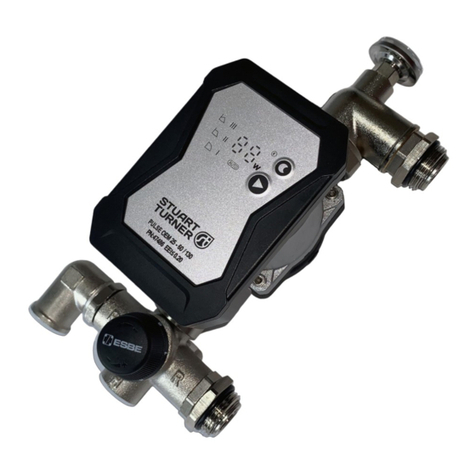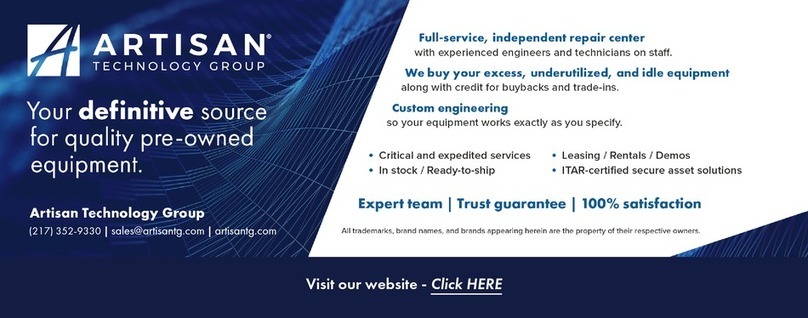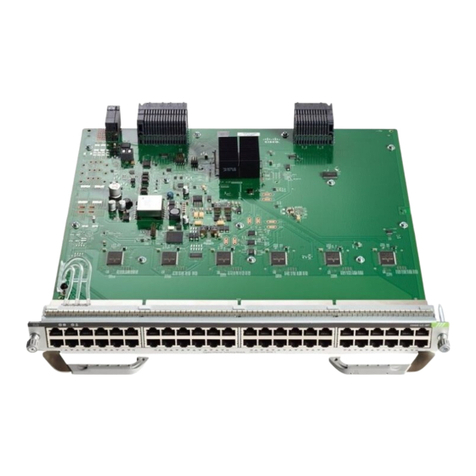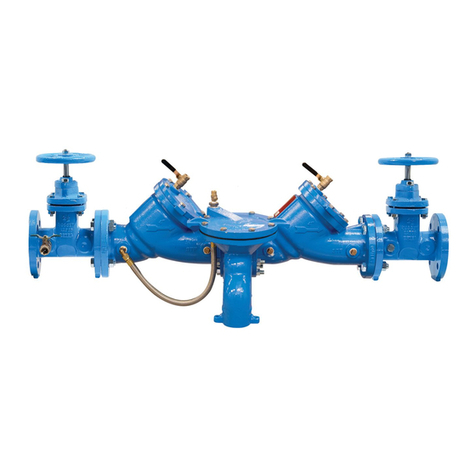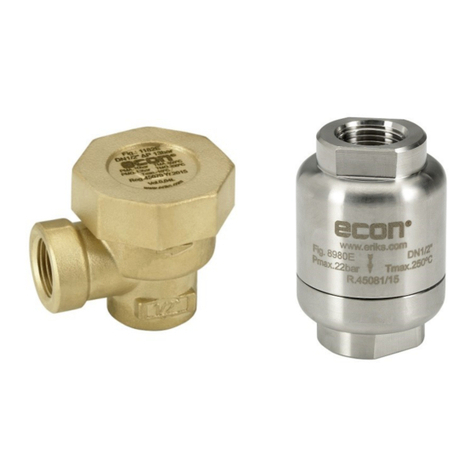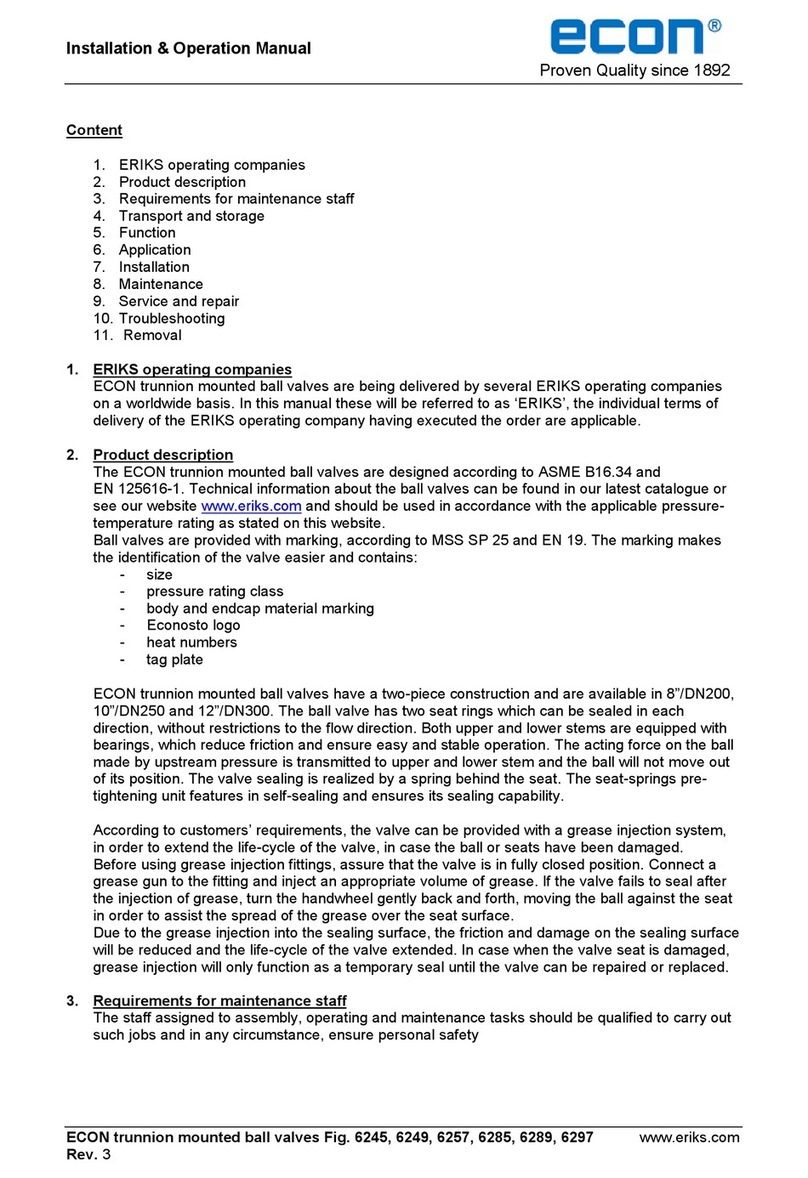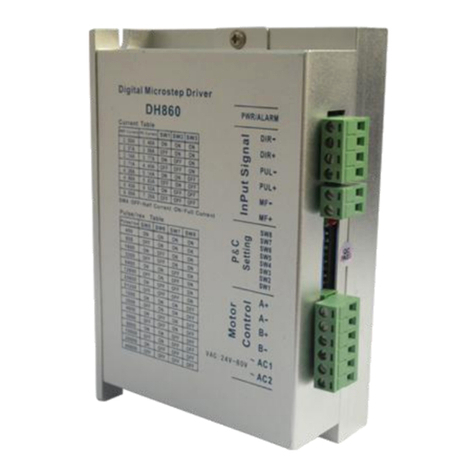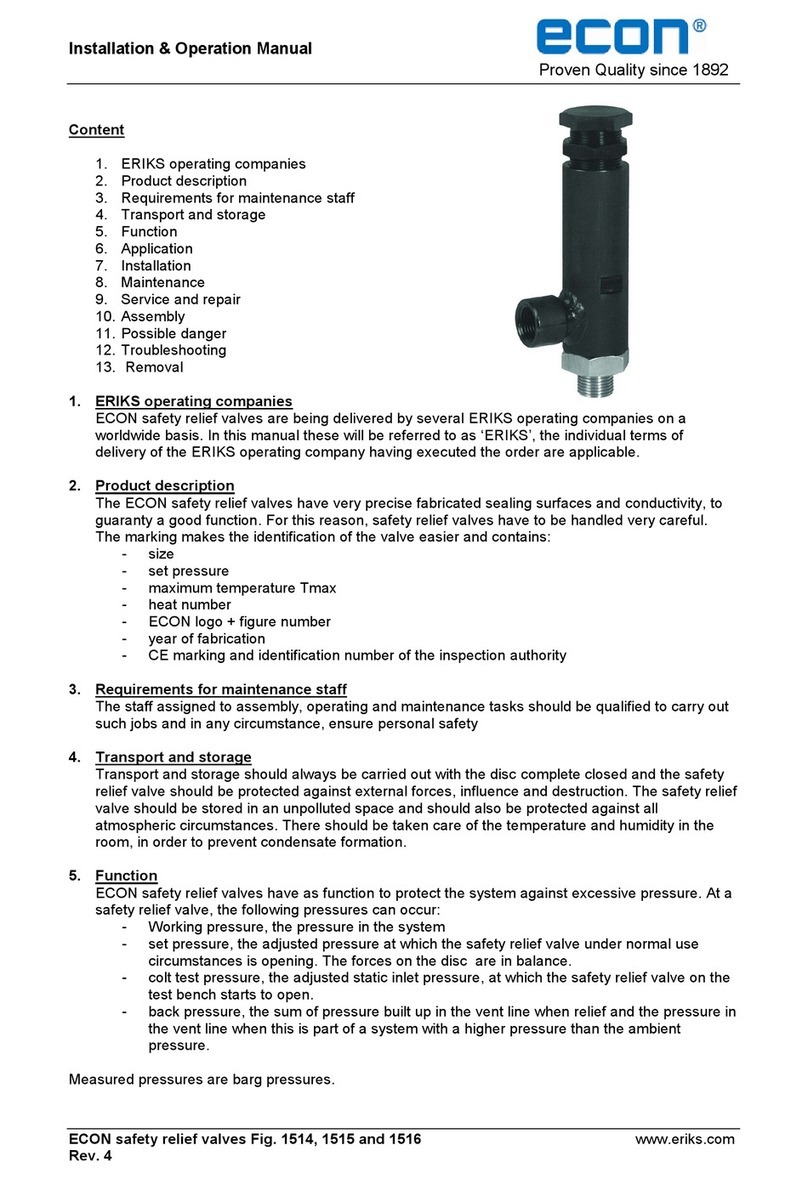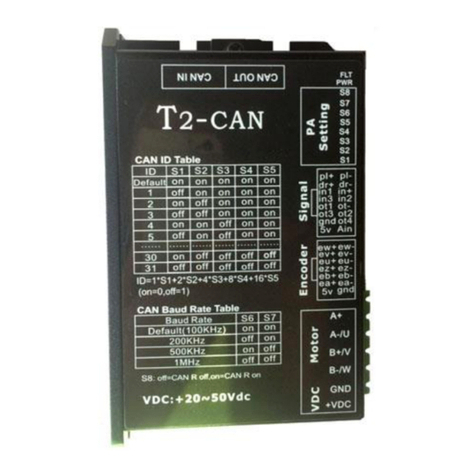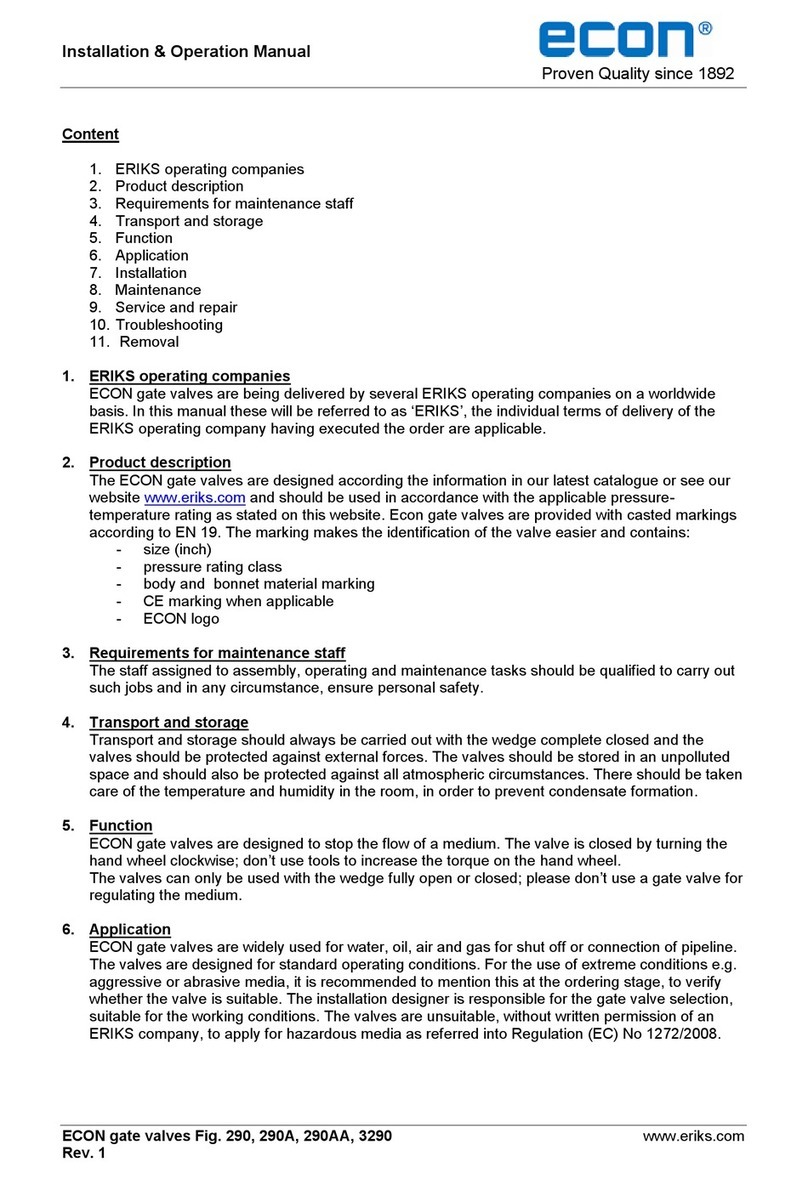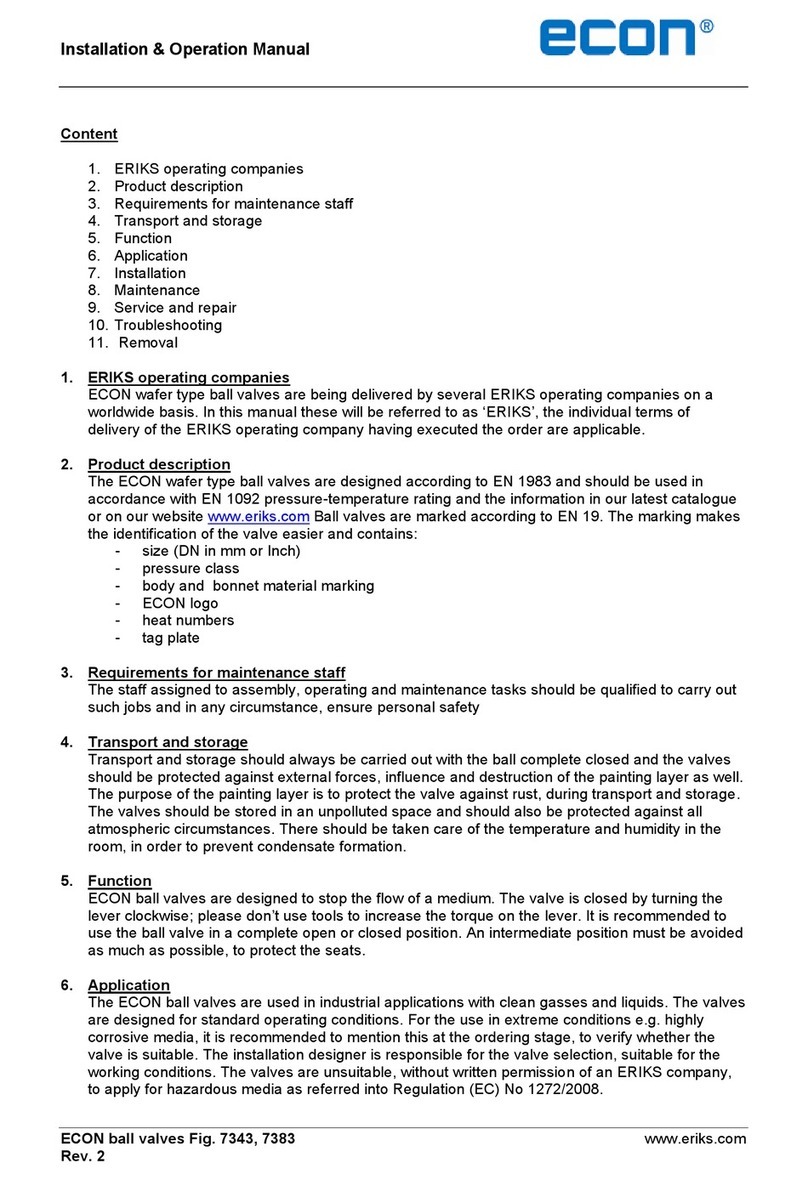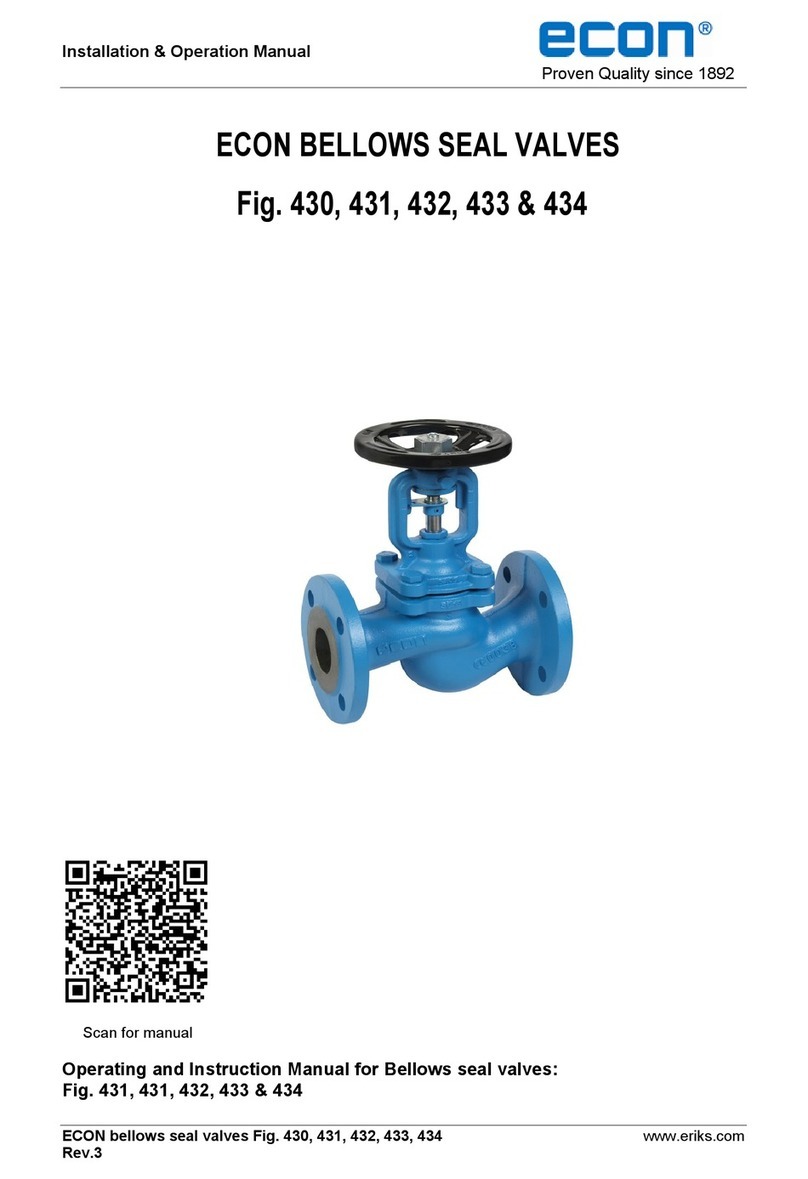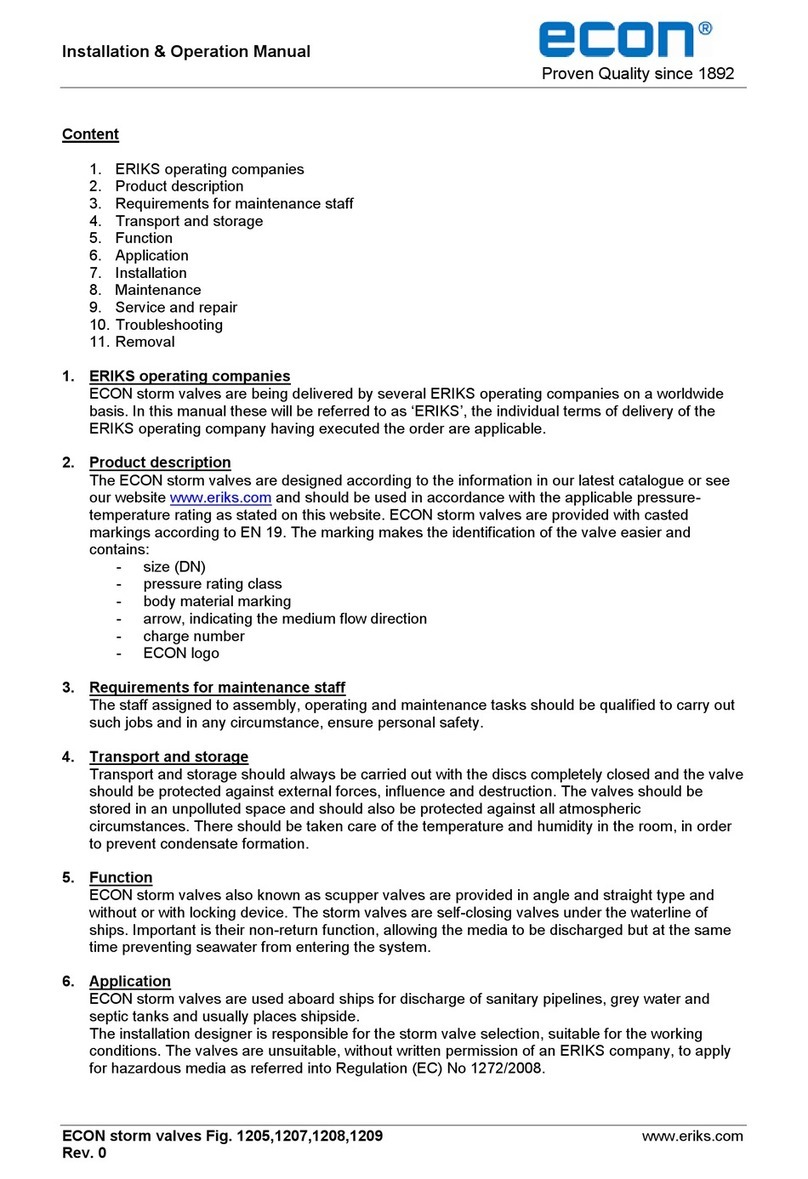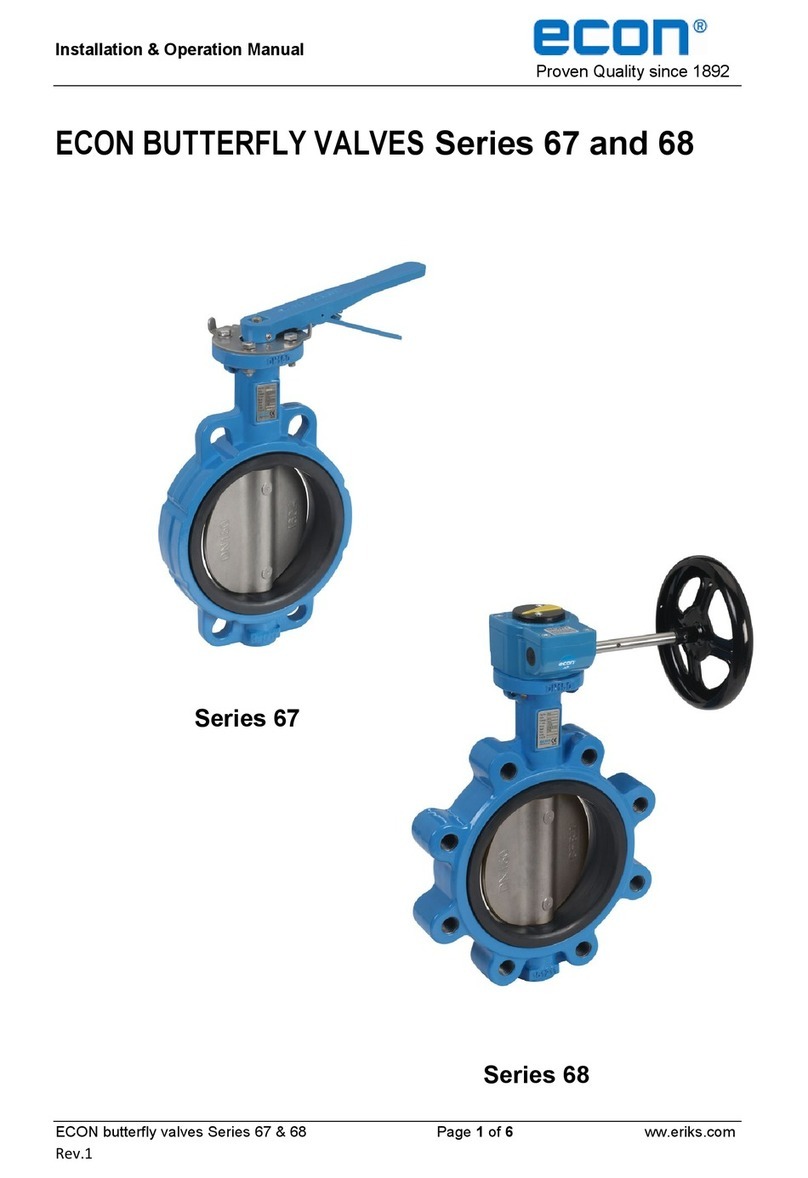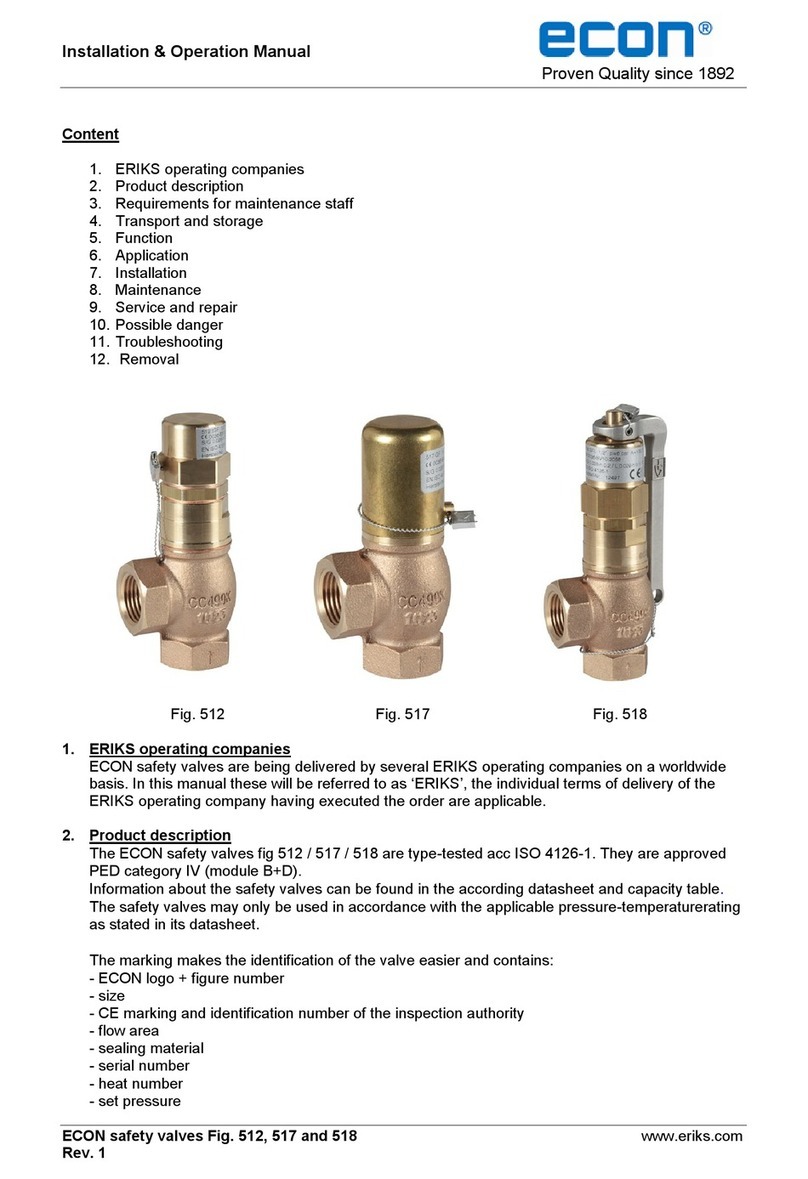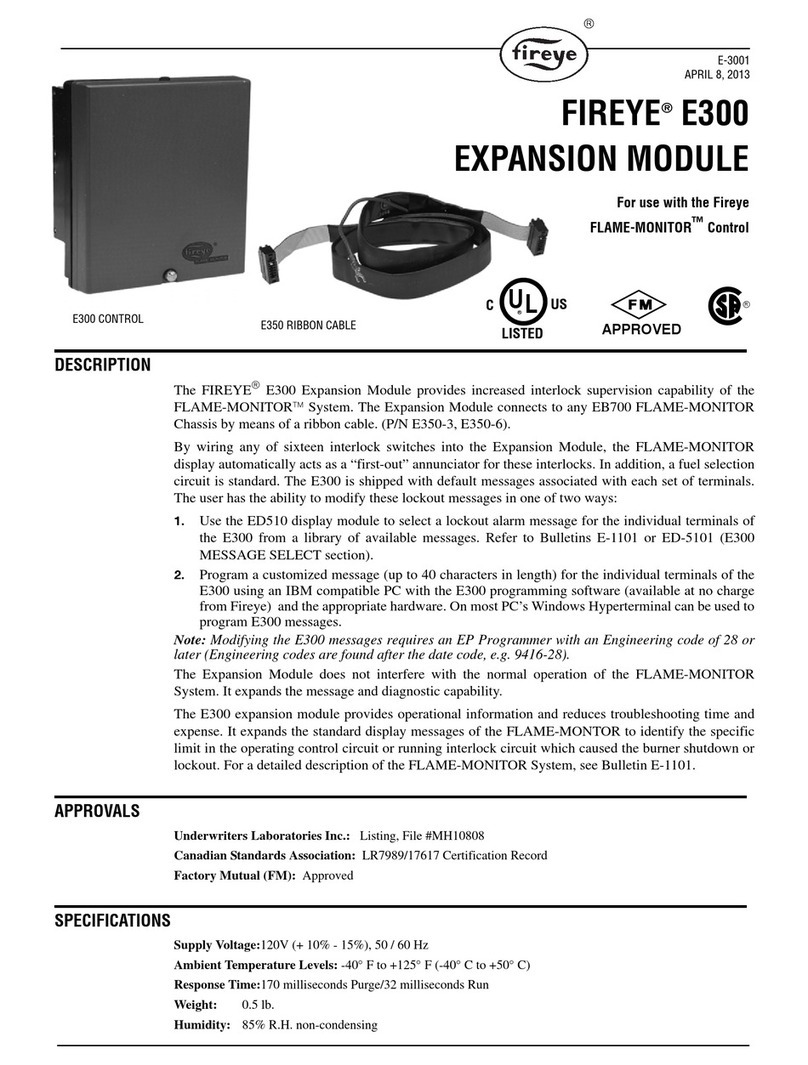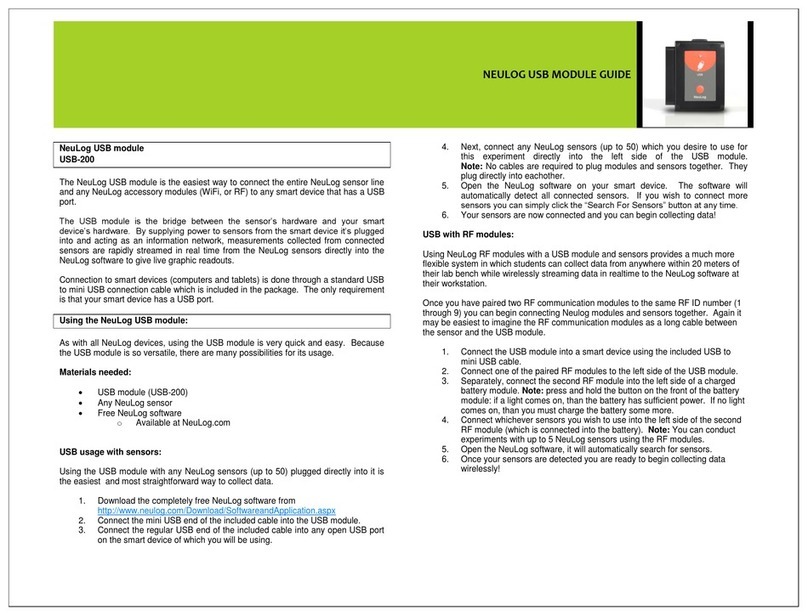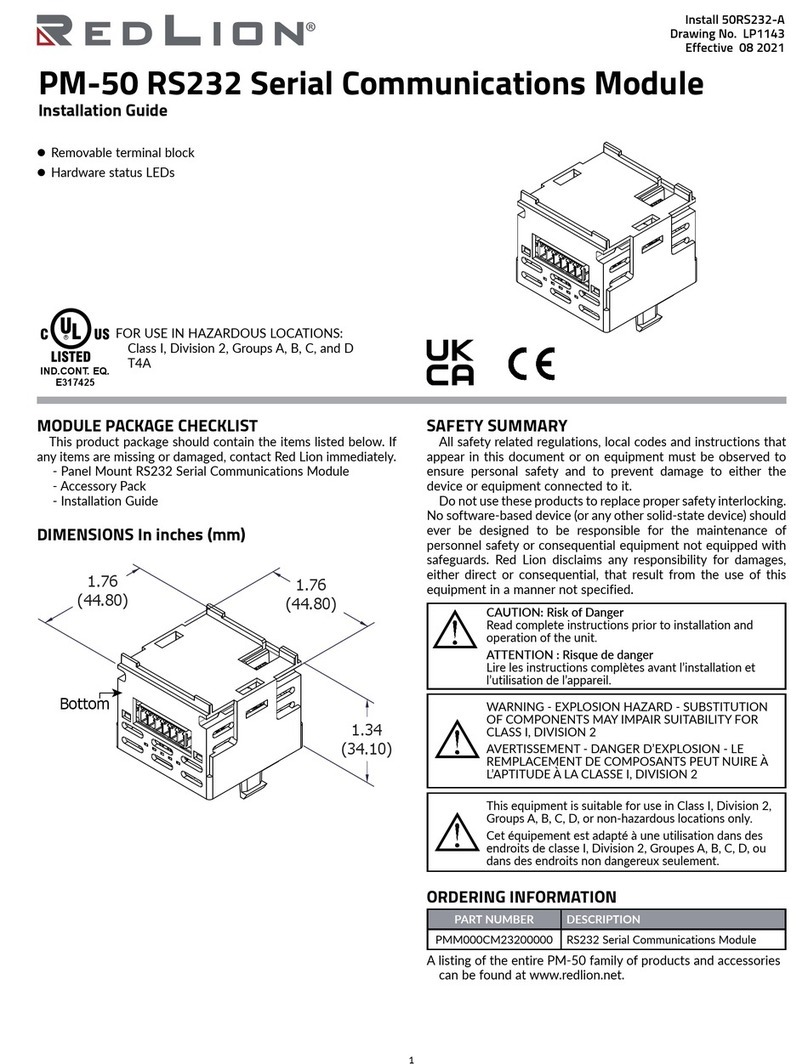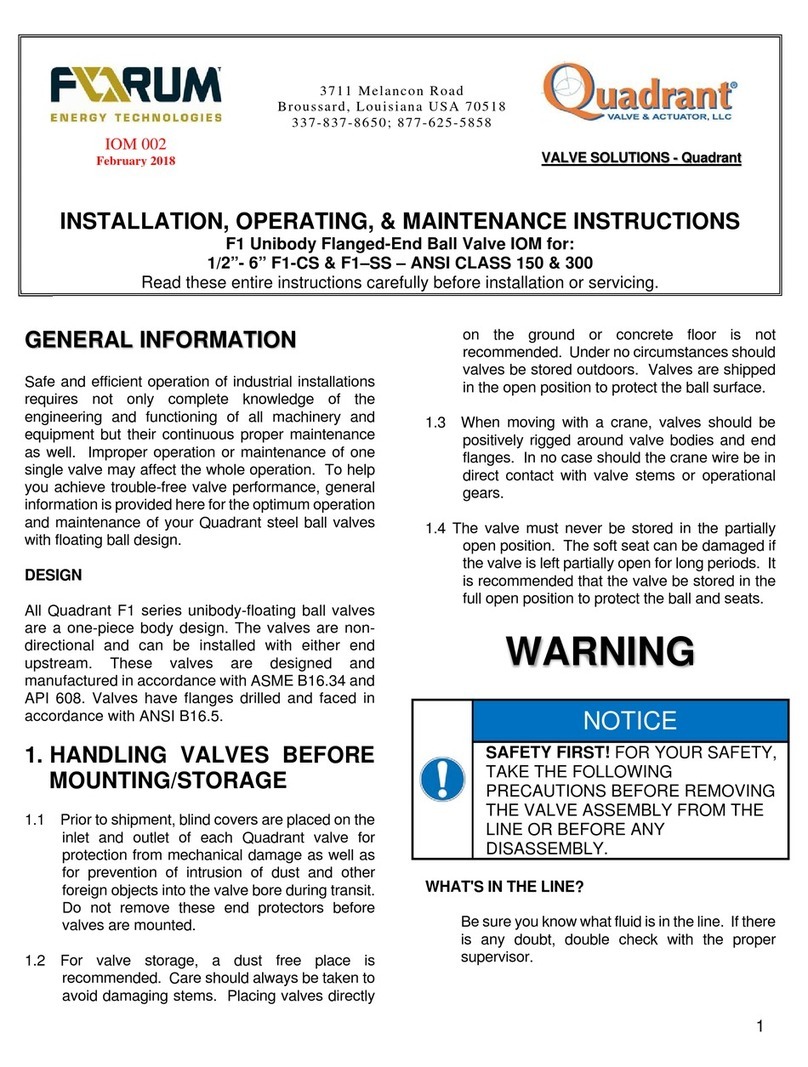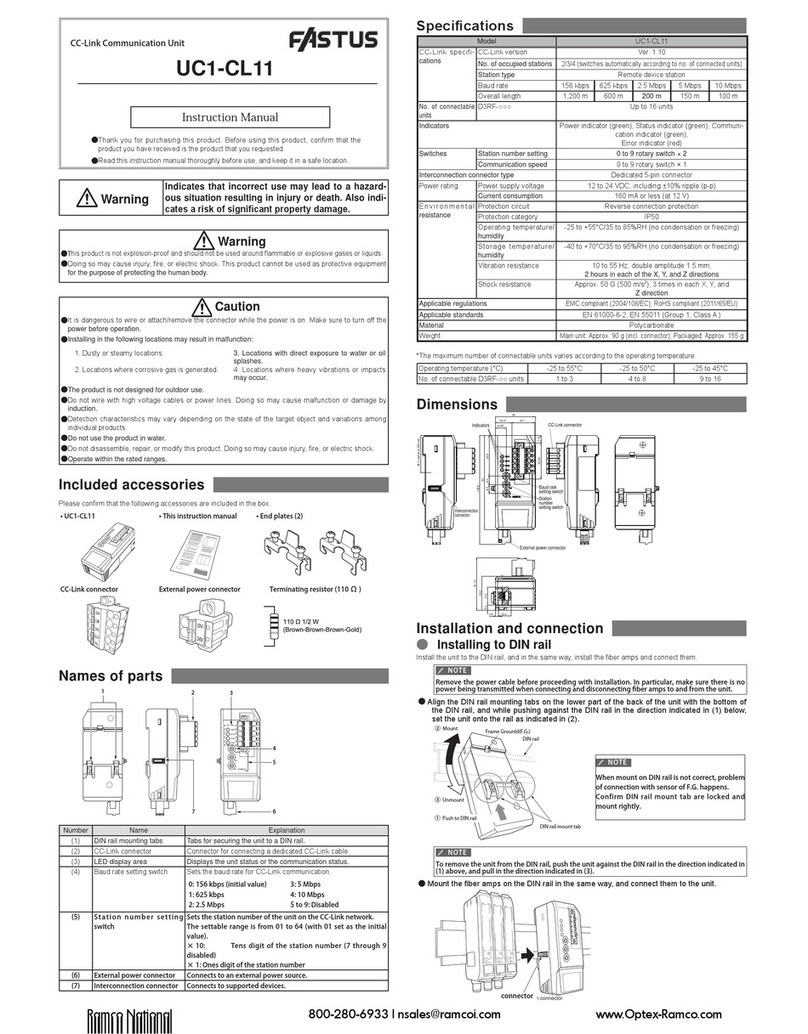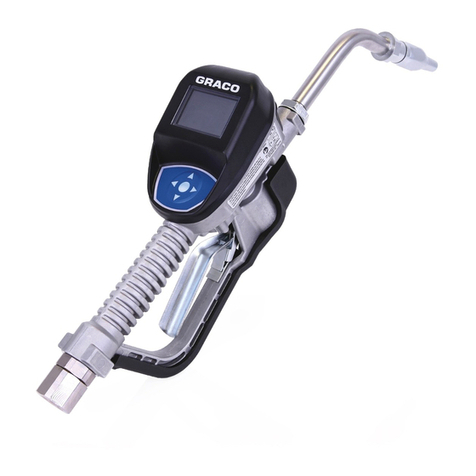Installation & Operation Manual
Proven Quality since 1892
ECON ball valves Fig. 7343, 7383 www.eriks.com
Rev. 0
7. Installation
During the installation of the wafer type ball valves, the following rules should be observed:
- make sure before an installation that the ball valves were not damaged during the
transport or storage.
- make sure that applied ball valves are suitable for working conditions, medium used in the
plant and the right system connections, according to pressure and temperature limits as
per the tag plate.
- to take off dust caps if the valves are provided with them.
- the interior of the ball valve and pipeline must be free from foreign particles.
- the valve should be assembled in the pipeline in open position, for a correct functioning,
the valve must be stress free mounted in the pipeline, supports must be arranged to
prevent any additional stress, caused by the weight of the valve or the pipeline.
- mount the pipeline in such a way that harmful forces, excessive vibrations, bending and
tensional forces are avoided.
- for easy operating, the clear distance around the lever shall be not less than 100 MM.
- before plant startup, especially after repairs carried out, flush the pipeline, with fully
opened ball.
8. Maintenance
Before starting any service jobs, make sure that the medium supply to the pipeline is stopped,
pressure is decreased to ambient pressure, the pipeline is completely cleaned and ventilated and
the plant is cooled down. Always keep safety instructions in mind and take all personal safety
precautions.
During maintenance, the following rules should be observed:
- keep always personal safety precautions in mind and always use appropriate protection
e.g. clothing, masks, gloves etc.
- be alert that the temperature still can be very high or low and can cause burns.
- be alert that a closed ball can contain medium under pressure and a opened ball can
contain some medium in the cavity-space behind the ball.
- check the ball valve on all possible leakages.
- dust, grease and medium residual, must be frequently cleaned of the valve body and all
moving parts, such as stem, to guarantee all operating functions.
- if required replace the stem seal, for safety reasons we recommend that the stem seal can
only can be replaced when the valve is depressurized, drained and ventilated.
- to ensure a safe operation we recommend to check the ball valves at an interval of three
months.
9. Service and repair
All service and repair jobs should be carried out by authorized staff, using suitable tools and use
original spare parts (packing, gasket, etc.) of the same valve size.
- welding repair and drilling on the valve is forbidden.
- it is forbidden to disassemble the valve and replace seats or seals when the valve is under
pressure.
- before new seats or seals are placed, the areas where they are placed, must be cleaned.
- after replacement of seats or seals it is necessary to check the valve operation and
tightness of all connections. Tightness test should be carried out.
- after installation, we recommend to check the ball valve at an interval of three months.
